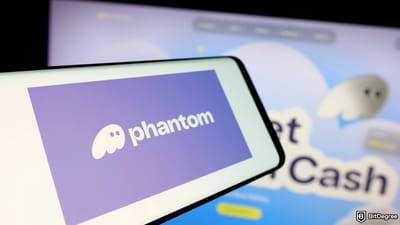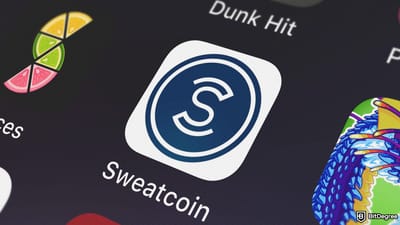Key Takeaways
- Token gating is a strategy that uses digital assets (tokens) to control access to exclusive content, experiences, or communities;
- For businesses or creators, implementing token-gated access brings multiple benefits, including increased revenue and customer engagement;
- Important steps to token gate are token creation, smart contract development, wallet integration, and token verification.
Stop overpaying - start transferring money with Ogvio. Sign up, invite friends & grab Rewards now! 🎁
Imagine having a special key that unlocks exclusive perks. Well, that's essentially what token gating is – “a VIP pass” to make things extra special and only available to those in the know.
To token gate special content, events, or communities, you need unique digital assets called tokens that grant access to those exclusive experiences. Users then get the tokens through various methods, store them in digital wallets, and connect these wallets to platforms for verification.
For enhanced security, consider using a hardware wallet like Ledger Nano X to store your tokens offline. That way, your digital assets are protected from cyber threats, ensuring peace of mind.

Did you know?
Subscribe - We publish new crypto explainer videos every week!
What is a Smart Contract? (Explained with Animations)


Table of Contents
What is Token Gating?
Token gating is a strategy that restricts access to digital content, online communities, or features based on whether a user has a specific token. The token can be a non-fungible token (NFT), a cryptocurrency, or even a loyalty point. By owning and holding the required token, users can unlock exclusive access to gated content or experiences.
Latest Deal Active Right Now:What is token gating’s purpose? Basically, it aims to create exclusivity and value for token holders, so they feel a sense of ownership and privilege.
This method is gaining traction in various industries, including digital content, gaming, and online communities, as a way to offer special benefits and improve user engagement.
How Does Token Gating Work?
Now, you understand the answer to “What is token gating?”. I guess the next question you may have in mind is “How does this system work?”.
Essentially, token gating is quite simple, as it's like having a digital VIP pass. First, developers create a special token to restrict access to specific content or experiences. To access the content or experiences, users must get the required token by purchasing it or through other methods. Then, the token is verified through their digital wallet, and if they have the right one, they're granted entry.
However, technically speaking, this seemingly easy process involves a lot of complex technology. Let's delve into more detail.
Token Creation
Well, it may sound obvious, but token gating definitely needs a token to operate. So, the initial step in this strategy is token creation. To help you understand token creation, let’s discuss the basic concept of a token first.
Tokens are essentially digital assets that can be used to exchange value[1]. These can serve various purposes, including granting access to products or services, providing membership to digital communities, and even allowing holders to participate in decision-making processes. These functionalities are possible through the underlying technology of blockchain and smart contracts.
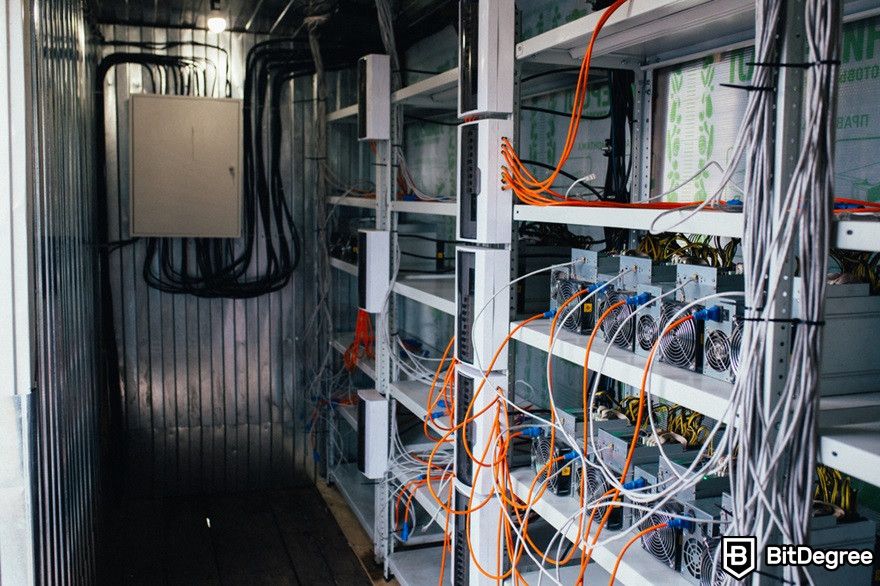
Blockchain technology provides a secure and transparent platform for recording and verifying token ownership and transactions. This ensures that token data is immutable, meaning no one can alter or delete the data once recorded.
Meanwhile, smart contracts are self-executing computer programs stored on the blockchain. These can automate the verification of token ownership and the execution of specific actions based on predetermined conditions.
For example, a smart contract can verify if a user holds a specific digital asset or token. If they do, they're granted token-gated access. It's like using a special key to unlock a door.
By combining blockchain and smart contracts, token gating systems can effectively control access to digital content or experiences, ensuring that only authorized users with the correct tokens can gain entry.
To create the token, developers must define its specific characteristics, including its name, symbol, total supply, and the blockchain platform it resides on. This process involves writing code that adheres to the chosen blockchain's token standards (e.g., ERC-20 for Ethereum).
Once the token's blueprint is complete, it's deployed to the blockchain through a smart contract, officially bringing the token into existence!
Token Acquisition
At this point, you may wonder, “So, how people can get tokens to start participating in the token-gated platform?”. Well, there are several ways for users to acquire tokens that grant access to gated content or experiences.

The primary way to get tokens is through direct purchase. Users can buy tokens directly from the project or platform issuing them. This often involves a token sale or initial coin offering (ICO), where tokens are made available for purchase in exchange for cryptocurrency or fiat currency.
By selling tokens directly, projects can generate initial funding and establish a user base.
Another method is through participation in platform activities, such as completing tasks, referring friends, or creating content. In gaming, users can earn tokens by playing the game and achieving certain milestones.
Alternatively, a platform may distribute tokens for free to attract users or reward existing customers. This strategy, known as an airdrop, involves sending tokens directly to users' digital wallets. Airdrops can be useful to generate excitement around a new project, incentivize user engagement, or reward loyal supporters.
In some cases, owning a specific NFT through marketplaces grants access to gated content or communities.
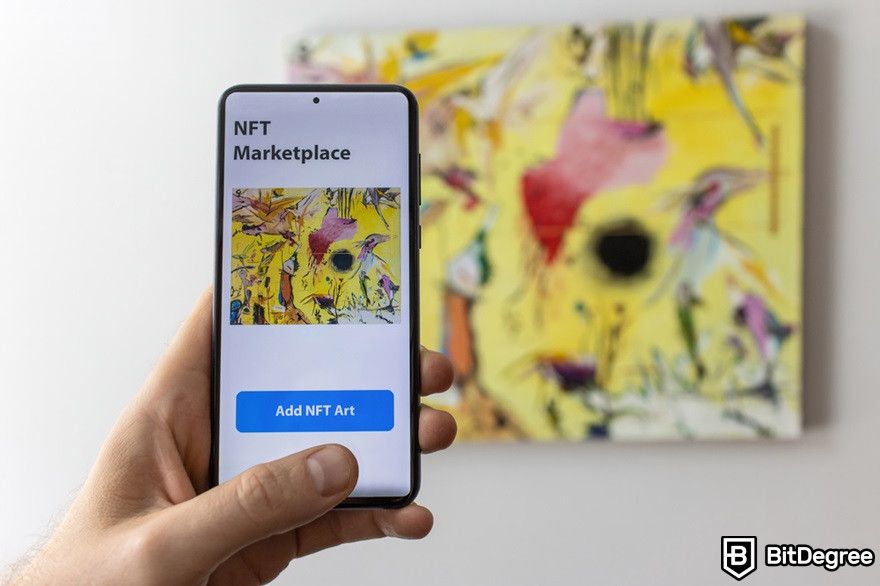
Well, the method of token acquisition generally depends on the specific project and its goals. In my opinion, if brands or creators offer various ways to get tokens, they’re more likely to broaden the user base and increase engagement.
I mean, people may have a preferred method to get the token, right? For example, some users may prefer to purchase tokens outright, while others may be more interested in earning them through participation. By offering both options, creators can attract a diverse range of users and make a more inclusive community.
Wallet Connection
Wallet connection is the bridge between the user and the token-gated content.
To access exclusive digital content or experiences, users must connect their digital wallet to the platform. This wallet is essentially a digital container where users store their cryptocurrencies and NFTs, including the specific tokens required for access.
By connecting their wallet, users grant the platform permission to verify the tokens they hold. This process ensures that only those with the necessary token can access the gated content. It’s like presenting a digital ID to gain entry to an exclusive event.
There are two types of digital wallets you can choose:
- Software wallets. These are digital wallets installed on your computer or mobile device, offering convenience but typically need careful security measures. An example is Coinbase Wallet.
- Hardware wallets. These are physical devices, such as Ledger Nano X and Ledger Nano S, that store your private keys offline, providing an extra layer of security for your cryptocurrencies and NFTs.
The best choice of wallet depends on your specific needs, the level of security required, and the platforms you interact with.
Among those options, my recommendation is Ledger Nano X! It’s a hardware wallet renowned for its security that lets you store your private keys offline. Doing this provides you with an extra layer of protection for your digital assets, including the tokens necessary for accessing token-gated content.
Despite the advanced security it offers, navigating the device is intuitive, making it accessible to users of all technical backgrounds. Additionally, it supports a wide range of cryptocurrencies and blockchain networks, ensuring compatibility with various token-gated platforms.
However, it's important to note that the specific functionality and compatibility depend on the platform you're using. Some platforms may have direct integration with Ledger devices, while others may need additional steps or compatibility with specific wallet connectors.

- Secure and reliable
- Accepts fiat currencies
- Lots of trading options
- Reputable exchange
- Accepts fiat currencies
- Offers various trading options

- Huge trading variety
- Regulation-compliant around the globe
- Fair trading fees
- Beginner-friendly
- A wide array of features
- Vast number of different crypto coins & tokens

- Beginner-friendly
- Secure
- Decent trading and withdrawal fees
- Crypto.com Visa Card
- Automated tools & bots
- Ecosystem synergy with CRO
Token Verification and Access Granted
The platform initiates a verification process after users connect it with their wallet. Token verification is critical to determine whether a user can access token-gated content.
The first step in this token-gating process usually involves identifying the required token (the platform determines the specific token or NFT needed for access).
Then, using blockchain technology, the platform queries the distributed ledger to confirm if the user's wallet holds the required token – in some cases, it may also require a specific number of tokens to grant access.

When users connect their wallet to the platform, they typically also sign a transaction to grant access to their wallet data. This signature verifies their ownership of the wallet and, subsequently, the tokens within it.
After that, using smart contracts, the platform assesses for details about the token beyond just ownership, such as expiration dates or specific metadata. This ensures that not just any token can get access, but only those that meet specific criteria. It's like checking if a VIP pass is still valid and for the right event.
If the right token is found, the smart contract grants access by allowing the user to view the content, join the community, or use the service. Meanwhile, the user is denied access and typically receives a notification or error message if the right token is not found.
Benefits of Token Gating
Token gating offers many advantages for both creators and consumers.
Creators and businesses can make more money by using token gating. They can sell tokens to people who want special stuff, like exclusive videos or online meetups.
This special stuff can also build stronger relationships with customers. People often feel valued and appreciated when they know they have special access to something others don't. This creates a deeper connection between the customer and the brand.
For example, offering exclusive behind-the-scenes content or early access to new products can make customers feel like they're part of an inner circle. This sense of belonging and special treatment can lead to increased loyalty, word-of-mouth recommendations, and ultimately, a stronger customer base.

Additionally, token gating enables creators and businesses to get access to token holder data, which may contain valuable insights into customer preferences. By studying who owns tokens, what they do with them, and how they interact with the platform, businesses can gain a deeper understanding of their audience.
For instance, they can identify which types of content or experiences resonate most with specific token holders, allowing them to tailor offerings accordingly.
Access to token holder data can also let businesses track how tokens are bought, sold, and traded. With this information, they can:
- Understand which tokens are in high demand and determine which products or services to prioritize.
- Observe token prices that inform pricing decisions for future token sales or related products.
- Analyze buying volume and price fluctuations that can influence the overall market sentiment towards the project.
Moreover, token gating aligns perfectly with the direct-to-consumer (DTC) business model that cuts out intermediaries, allowing for direct engagement with customers. This means selling products or services without relying on retailers or distributors.
This model further brings more benefits to businesses, such as getting a larger portion of the revenue because they can remove the middlemen and have complete control over the customer data which then can enable better-targeted marketing and personalization.
Besides creators and businesses, what is token gating’s purpose for customers? Well, they can get a lot, I might say. The most obvious one is that customers can enjoy unique content and products unavailable to the general public, which brings a sense of exclusivity.

More importantly, brands often use tokens to create personalized offers and experiences based on customer behavior, such as offering discounts, early access to sales, or exclusive product drops for specific token holders. This level of customization can make users feel more satisfied.
Additionally, owning a token means they demonstrate their support and belief in the project or product, potentially attracting them with like-minded individuals because they share a common interest. This shared passion often feels like joining a fan club where everyone is enthusiastic about the same thing.
In some cases, token holders can also participate in decision-making processes. They can contribute to discussions, give feedback, or even co-create with the creator. This means they have a say in how the project or community develops, making them feel more connected and valued.
For your information, tokens, especially NFTs, can appreciate in value over time. Meaning that customers may benefit financially if the tokens they hold increase in price and can be sold on secondary marketplaces. Customers can also resell their tokens if they no longer need access, potentially recovering their initial funding or even making a profit.
Token Gating Use Cases
Token gating offers a versatile approach to creating exclusive digital experiences. Let’s dig deeper into each use case and see if any real-life brand has used the strategy!
Content and VIP Access
Creators and brands can give customers token-gated access to exclusive content, such as gated articles, behind-the-scenes footage, or unreleased music tracks. Some even level up this strategy by offering personalized content based on specific token attributes or user behavior.
Alternatively, they can offer rewards like VIP access to events, exclusive merchandise, or physical products. These tangible benefits can create a more immersive experience for token holders and strengthen the connection between the brand and the customer.
One of the most prominent examples is Mastercard Music Pass NFT. This NFT gating strategy lets the token holders access exclusive content, experiences, and educational resources related to the music industry for its Artist Accelerator program.
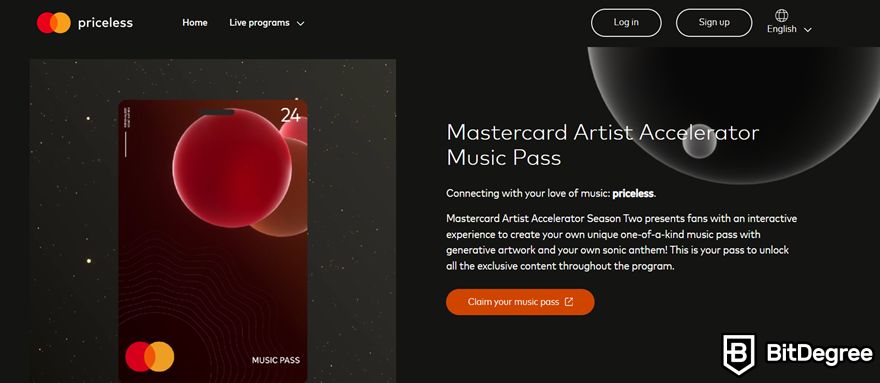
The holders can get access to educational resources, such as one-on-one sessions with a popular songwriter or hip-hop artist, and explore cutting-edge technologies like Web3, AI, and blockchain since the program is focused on music industry development.
Not only educational materials, select holders can also redeem free tickets to the OnesToWatch and Mastercard concert tours.
Another example related to the music industry comes from Coachella. It partnered with FTX to offer NFTs that grant lifetime festival passes and VIP experiences, creating a new level of engagement for festival-goers.
Besides exclusive content and premium tickets, brands or creators can give their customer base early access to new products and features to create excitement and anticipation among the community.
Brands like Adidas and Nike have used an NFT gating approach to offer early access to limited-edition products. For instance, Adidas' "Into the Metaverse" token holders received token-gated access to exclusive merchandise and experiences.
Community Building
Token gating goes beyond exclusive access. For example, brands or creators can token gate private communities, where members can interact, share ideas, and build relationships with like-minded individuals.
This kind of community can build a sense of prestige and rarity among members and provide monetization opportunities for creators or brands as they can generate revenue through token sales, merchandise, or premium access levels.

Examples of token-gated communities include:
- NFT collector communities. Artists can use NFT gating to let owners of their NFT collections access exclusive forums, events, and merchandise.
- Fan clubs. Artists or celebrities can create private communities for their most dedicated fans, offering online meet-ups or Q&A sessions.
- Gaming guilds. Gamers can form exclusive groups based on shared interests or in-game achievements.
To level up the token gating strategy, businesses can make tiered participation with different levels of community involvement based on token holdings. For instance, holders of higher-tier tokens get access to exclusive live streams or merchandise drops, while long-term fans can receive personalized recommendations.
This strategy not only creates exclusivity but also builds a sense of progression within the community. As members reach higher tiers, they feel a sense of accomplishment and are motivated to get more tokens to unlock additional benefits.
Gamification and Rewards
Integrating token gating systems into gameplay helps developers create engaging and rewarding ecosystems for players.
In gaming, tokens generally serve as in-game currency, allowing players to purchase items or services within the game. Once players get the tokens, they can use those to unlock rare or limited-edition in-game items, such as weapons, skins, or characters. These can also be used to speed up character leveling, unlock new abilities, or gain access to exclusive game content.
Besides these in-game advantages, players can get virtual land or property using tokens! This creates opportunities for in-game economies and social interactions as players can build, trade, and interact within their virtual spaces.
An example of a game that uses a token-gated system is The Sandbox. It’s a virtual world where players can create their own gaming experiences. In fact, it also enables users to earn money by spending time in the game[2]. Built on the Ethereum blockchain, The Sandbox uses its native token, SAND, as a key to access various features and opportunities.
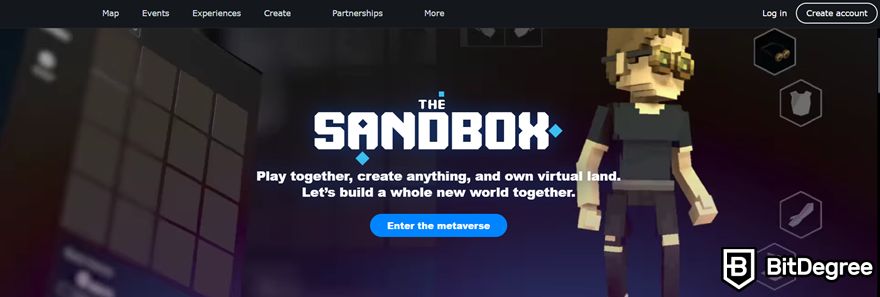
Players can purchase virtual land using SAND and turn it into a personal digital space. This land ownership serves as a foundation for creating unique gaming experiences, such as building games, hosting events, or selling virtual goods. Owning land also allows players to gain access to exclusive in-game events, partnerships, and opportunities to monetize their creations.
While The Sandbox is a good example of a virtual world platform, check out Splinterlands for inspiration for a game using tiered access through token-gating. This trading card game offers different tiers of game cards based on rarity and power.

Players get cards of varying rarity, from common to legendary. Higher rarity cards often possess superior abilities and stats, providing a competitive advantage. Based on card strength or collection size, they can participate in different game modes, with higher tiers offering more rewards and increased challenges.
Players who own specific cards or card combinations may unlock exclusive rewards, such as limited edition cards or in-game items.
That’s it about a game with tiered access. If you wonder about a game using NFT gating, Sorare can be a suitable example. It’s a fantasy football game where players collect digital cards representing real-world soccer players. These cards are actually NFTs, and their rarity and player performance determine their value.
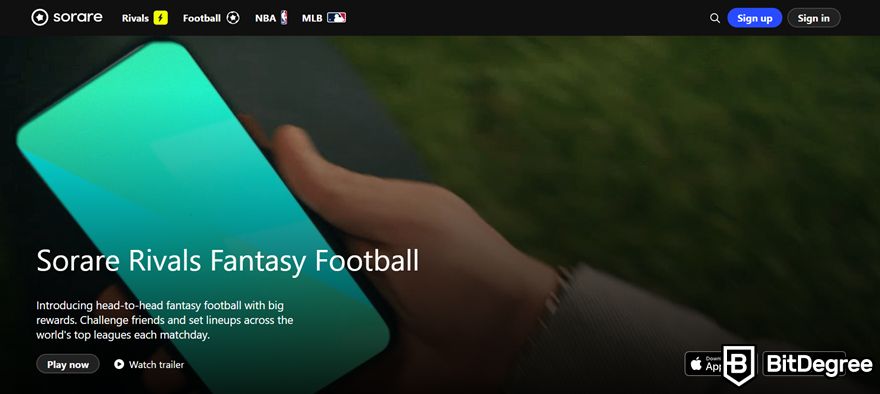
Sorare uses NFT gating to create exclusive leagues and tournaments, where players with specific NFT combinations can compete for prizes. This model combines the thrill of fantasy sports with the unique benefits of blockchain technology.
Challenges of Token Gating
While token gating offers numerous benefits, it also presents several challenges that businesses and creators need to address.
The main challenge is related to technical barriers. Setting up and managing token gating systems needs a deep understanding of blockchain technology and smart contracts, which can be complex and daunting for many businesses.
Many consumers may also not be familiar with blockchain or how to manage digital wallets, creating a barrier to entry and potentially limiting the audience. It can also become a complex onboarding process if you decide to educate users about the whole process, from acquiring tokens to setting up digital wallets and understanding how to use them overall.
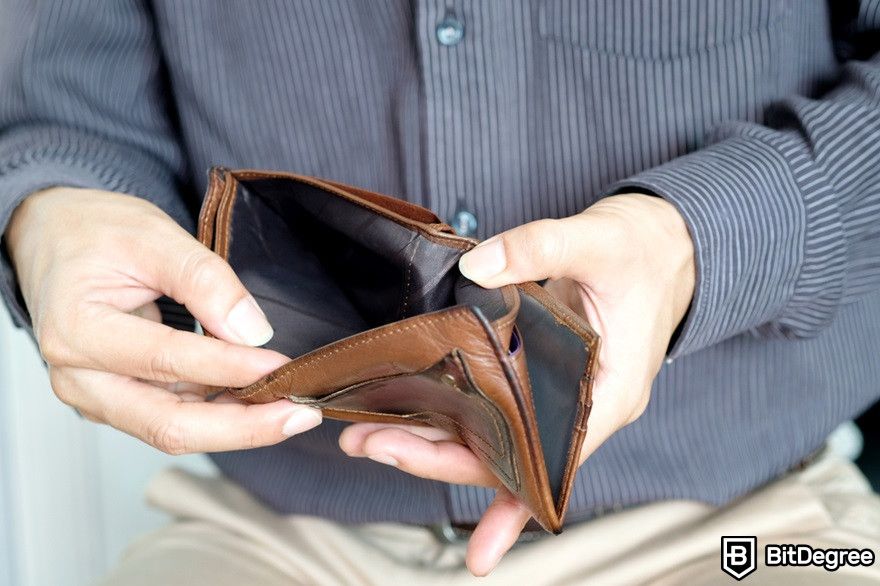
From the business or creator perspective, when their user base grows, they also need to think about scaling. Meanwhile, ensuring that the token gating system can handle a large number of transactions and users without performance degradation is a significant challenge.
Besides technical complexity, you should be aware of security risks. Despite the security features of blockchain, smart contracts can still be vulnerable to hacking if not properly coded and audited, which can lead to unauthorized access or loss of tokens.
Users can also fall victim to phishing attacks or scams, where malicious actors trick them into giving away their tokens or private keys.
Best Practices for Token Gating
At this point, you know the benefits and challenges of implementing token gating systems. Understanding these aspects is crucial for making informed decisions and maximizing the potential of this strategy. To ensure successful implementation, let's explore some best practices!
The first tip on how to token gate your perks is building transparency. Clearly communicate the benefits of token ownership and the value proposition of the gated content or experiences, such as exclusive access, community membership, or governance rights. If there are any restrictions or limitations to token ownership, disclose them upfront to build trust.
Explain how tokens are used and how they contribute to the overall ecosystem. I recommend you provide clear onboarding instructions, such as on how to get and use tokens, including wallet setup and connection.

Moreover, carefully consider the token supply and distribution model to maintain value and avoid inflation. Develop an economic model that balances supply, demand, and token utility to maintain long-term value. If you want to create scarcity and increase demand, control the total number of tokens in circulation.
Also, consider integrating token-based governance mechanisms, so holders can participate in decision-making. That way, you can build a strong sense of community among token holders, as they feel empowered to influence the project's direction.
Additionally, actively seek feedback from token holders to improve the token gating experience. By listening to your community, you can identify areas for improvement and enhance overall satisfaction.
Finally, consult with legal experts to ensure compliance with relevant regulations and securities laws. Token gating projects often involve complex legal and regulatory considerations. By seeking expert advice, you can mitigate risks and protect your business.
Conclusions
Token gating can be a powerful tool for businesses and creators to build engaged communities and generate revenue. "Then, what is token gating's purpose for customers?", you may ask. Well, individuals can unlock various benefits and privileges with tokens, such as exclusive content and access to private communities.
To token gate access or exclusive content, you need to create unique digital assets (tokens) that grant holders access to specific experiences or communities. The community members or customers then can get the tokens through purchases, earnings, or airdrops, store them on digital wallets, and connect their wallets to the platform to verify ownership.
For improved security, consider using hardware wallets like Ledger Nano X to store your tokens offline. This gives an additional layer of protection against potential hacks or theft.
The content published on this website is not aimed to give any kind of financial, investment, trading, or any other form of advice. BitDegree.org does not endorse or suggest you to buy, sell or hold any kind of cryptocurrency. Before making financial investment decisions, do consult your financial advisor.
Scientific References
1. P. Freni, E. Ferro, R. Moncada: 'Tokenomics and Blockchain Tokens: A Design-Oriented Morphological Framework';
2. T. Hakkarainen, A. Colicev: 'Blockchain-Enabled Advances (Beas): Implications for Consumers and Brands'.

